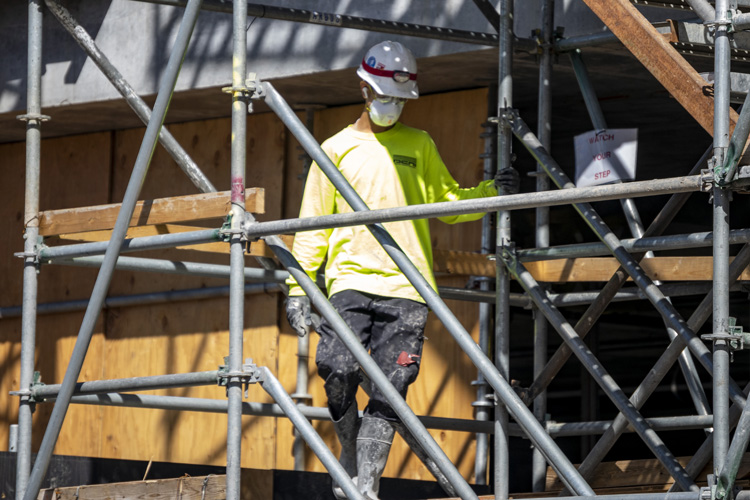The coronavirus pandemic has greatly impacted a number of industries and caused leaders to reevaluate the way they conduct work, how they manage employees, how they retain projects, and more. Unlike some industries, the construction industry has only shown minimal slowing depending on geographical region and market segments. Making changes to both, the traditional office setting and the field, there are still questions as to whether these changes will stick in the future. Below are a few examples of how the construction industry has shifted due to COVID-19.
New Safety Precautions

First and foremost, when dealing with a pandemic or any crisis-like situation that puts employee’s health at risk, the safety of employees supersedes other priorities. To help control the situation and spread of illness, certain processes must be enforced before others, and in this case, the first step is to create a workplace response plan that’s based on the guidelines provided by the nation’s medical officials, including the Centers for Disease Control (CDC) and World Health Organization (WHO).
This response plan should be catered to each individual situation considering there is no ‘one-size-fits-all’ response for any crisis. In this case, companies should cater the plan to reflect the circumstances of COVID-19. For starters, this plan should summarize the most recent updates and information from the CDC and WHO. Second, it’s important to outline any symptoms of the illness and present a recommended response plan that addresses all of the potential situations that may arise. To help communicate the severity of each situation, companies can rank situations on a scale from high, medium to low in terms of their exposure risk levels. Additionally, plans should contain instructions detailing how employees should notify their supervisor or manager if they are at risk of exposure or have recently been exposed to illness. Lastly, this plan should be sent and distributed to anyone within a company so messaging stays clear and consistent for both employees in the office and out in the field.
The Shift in Hiring and Recruitment
Each construction company likely experiences hiring and recruitment differently given this process is largely dependent on the market their projects are located in. For example, companies like Johnson Carlier are hiring in select markets, including Phoenix, since the area is currently considered a hot market for construction. Although the hiring process is dependent on a company’s preference, the entire industry may see a shift toward virtually-conducted interviews instead of traditional, in-person interviews. Once a new team member is hired, it’s vital that they’re provided with the company’s safety guidelines, applicable workplace response plans, and other crisis response plan documents so they can follow the same policies that the existing employees follow.
Impact of Technology
The construction industry has continued to stay busy throughout the pandemic, but if there has been any setback, it would be the challenge of procuring materials supplied from countries located around the world. Typically, when picking materials, especially if they are custom, a buyer will travel to view the product in person but post-COVID, it’s expected that the industry will heavily rely on technology to help virtually identify and verify materials. Virtual Design Construction (VDC), also known as the process of ‘building before we build it’ within the pre-construction phase will only be relied upon even more for reasons of minimizing waste in the field, identifying potential issues well in advance and assisting in identifying material and/or components that may belong lead or geographically challenging to procure.
Tom Harrison is senior vice president and managing director at Johnson Carlier. He has more than 20 years of business development and construction management in Arizona.




